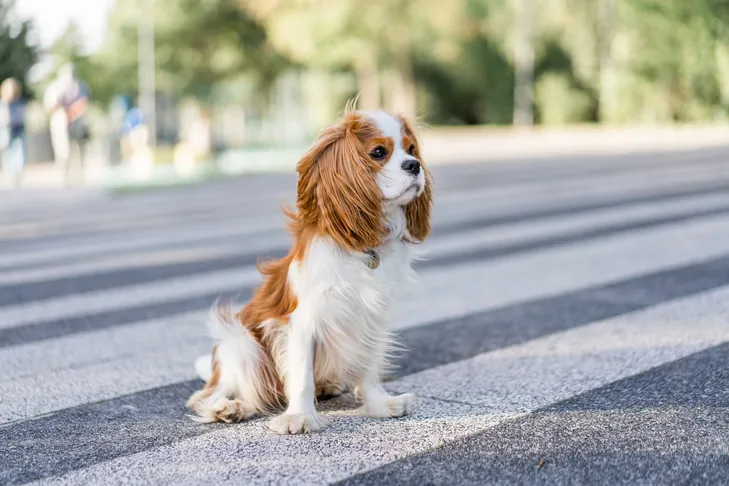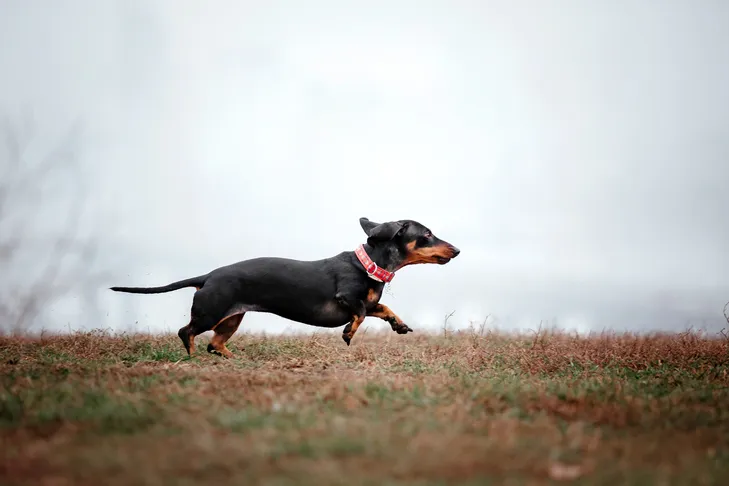It’s a universally recognized scene: a dog owner repeatedly calling “come!” to their dog, who is blissfully engaged in sniffing a particularly interesting patch of grass, seemingly oblivious. This common scenario highlights a fundamental challenge in dog ownership: asking your dog to abandon an engaging activity and return to you immediately is a significant request. However, developing a reliable “come” command, also known as recall, is more than just a convenience; it’s a potentially life-saving skill. In emergencies, your dog’s ability to respond without hesitation can prevent accidents or dangerous situations. This comprehensive guide from Dog Care Story will walk you through the essential steps to cultivate a trustworthy recall, transforming your dog’s response from optional to automatic.
To successfully how to get puppy to come inside and respond to your call, we must first establish crucial foundational skills. These preliminary exercises build your dog’s focus and ensure they are comfortable with being handled, setting the stage for effective recall training.
Laying the Foundation: Pre-Recall Training
Before you introduce the explicit “come” cue, it’s vital to teach your dog a few prerequisite verbal cues that build a strong communication bridge between you. These include associating their name with attention and comfortable collar handling.
The Name Game: Capturing Attention
The primary goal of the “Name Game” is to teach your dog that hearing their name signals an immediate need to pay attention to you. This forms the cornerstone of all further training, as a dog that focuses on you is much more likely to respond to subsequent commands. By consistently associating their name with positive experiences, your dog will quickly learn to orient towards you, anticipating further instructions or a reward. This foundational focus is essential before progressing to the “come” command, ensuring they are receptive to your cues. With consistent practice, your dog will develop a keen ear for their name, always ready to respond when called, understanding that it often leads to a rewarding outcome.
 A focused Cavalier King Charles Spaniel attentively sitting in a park crosswalk, demonstrating good attention skills after name training.
A focused Cavalier King Charles Spaniel attentively sitting in a park crosswalk, demonstrating good attention skills after name training.
‘Gotcha’ Training: The Collar Grab
The second crucial foundational skill is teaching your dog to comfortably accept having their collar grabbed. Many dogs naturally recoil when you reach for their collar, which can be problematic in an emergency when you need to quickly secure them. This “Gotcha” exercise also proves invaluable when attaching a leash, guiding your dog to the bath, or simply needing to get a firm hold. The principle is simple: teach your dog that a collar grab is always followed by something delightful.
Follow these steps for effective ‘Gotcha’ training:
- Lure and Reward: Begin by luring your dog towards you with a highly appealing treat. As they approach, allow them to lick or nibble the treat, but don’t release it fully yet.
- Verbal Cue and Gentle Grab: Say “gotcha” in a cheerful tone, then slowly and gently take hold of your dog’s collar. Once you have a secure, light grip, release the remainder of the treat for them to enjoy.
- Increase Firmness: As your dog grows more comfortable, gradually make your collar grabs faster and slightly firmer, ensuring you always reward immediately afterward.
- Refine Timing: Once your dog is consistently relaxed with faster, firmer grabs, adjust your timing: wait to offer the treat until after you’ve said “gotcha” and have a firm grip on their collar.
- Vary Locations: Practice these collar grabs in many different environments to generalize the behavior, always ensuring a treat is offered as a positive reinforcement.
By the time your dog understands that collar grabs lead to good things, you’ll find restraining them during a recall is seamless. This prevents them from darting away just as you reach for them, ensuring the “come” command is fully reliable. This foundational training is just as important as knowing your crate training schedule for 8 week old puppy for overall puppy development and safety.
 A lively Dachshund happily running across an open field, highlighting the importance of a reliable recall and safe collar grabs for off-leash play.
A lively Dachshund happily running across an open field, highlighting the importance of a reliable recall and safe collar grabs for off-leash play.
Step-by-Step: Training the “Come” Command
With the preparatory steps complete, you are now ready to actively train the “come” command. The core principle for success is to consistently be the most exciting and rewarding element in your dog’s environment. If you make coming to you a fun and highly anticipated event, your dog will eagerly comply. Conversely, if your tone is angry, harsh, or even just unenthusiastic, your dog will have little incentive to respond.
Always use rewards your dog absolutely adores – this could be a favorite toy, a game of tug, or high-value treats like small pieces of chicken or cheese. Make their effort so worthwhile that they wouldn’t even consider ignoring your call.
Here’s how to get started:
- Initial Practice (Close Range): With your dog just a few feet away, say their name in an upbeat tone, immediately followed by “come.” Entice them to approach you by patting your legs, making kissy noises, or clapping your hands.
- Mark and Reward: The instant your dog moves towards you or reaches you, “click” (if using a clicker) or verbally “mark” the moment with a cheerful “yes!”, then praise them enthusiastically while offering their favorite reward.
- Increase Distance Gradually: Once your dog reliably comes from a short distance, gradually increase the challenge. Let your dog wander to the end of their leash before calling them back.
- Off-Leash Indoors: Transition to an off-leash environment in a quiet, enclosed room. To make coming even more appealing, say “come” while running backward. Dogs naturally love a good chase, and this encourages them to pursue you.
- Vary Indoor Locations: Practice your recall in different rooms throughout your house to help your dog generalize the command.
- Add a “Sit”: When your dog consistently runs to you with enthusiasm, introduce a “sit” command upon their arrival. As they sit, mark, praise, and reward. This teaches them to be stationary when they reach you, preventing them from bouncing away immediately after getting their reward. It’s a great way to prevent undesirable behaviors, similar to how you might approach how to make a puppy stop jumping.
- Reintroduce “Gotcha”: After successfully integrating the “sit,” occasionally add a “gotcha” (collar grab) when they arrive. This reinforces that it’s perfectly fine for you to restrain them, making future handling smoother.
Always ensure that when your dog comes to you, they are showered with ample praise, petting, and playtime, in addition to a treat or toy. Never be stingy with rewards in this context. Your dog should firmly believe that responding to the “come” command is an incredibly fun and rewarding experience. You can also incorporate recall games, such as “round robin” (where multiple people take turns calling your dog) or “find me” (where you hide in another room and call your dog) to make training more engaging and unpredictable.
 A well-behaved French Bulldog in a jacket walking calmly on a park path, illustrating successful recall training in an environment with potential distractions.
A well-behaved French Bulldog in a jacket walking calmly on a park path, illustrating successful recall training in an environment with potential distractions.
Adding Distractions & Outdoor Recall
Once your dog reliably performs the “come” command in various indoor settings, you’re ready to introduce distractions. Start small and build up gradually. Begin with minor distractions in the room, such as another pet, someone quietly cooking in the kitchen, or gently tossing a ball in your hand without engaging your dog directly. Slowly increase the intensity and variety of these distractions.
Next, take your training outdoors, but exercise extreme caution. Never allow your dog to roam free immediately. Even if their indoor recall is 100% reliable, the outdoor environment presents a whole new level of distractions. Start with your dog on a standard 6-foot leash and repeat all the steps outlined above. Once they’re consistent, graduate to a longer line, such as a 20-foot or 30-foot training line, slowly giving your dog more distance as you train. The purpose of this long line is not to reel your dog in if they ignore you, but to maintain control of the situation. If your dog hesitates, simply gather the leash as you walk closer to them and try the command again.
If your dog begins to ignore your calls, it’s a sign to troubleshoot your training. There could be various reasons why your dog isn’t responding. In such cases, take a few steps back in your training progression. Revisit simpler environments or reduce the level of distraction. Ensure you aren’t asking for too much too soon. With patience and consistent practice, your dog will develop a reliable recall command that works almost anywhere and anytime. However, it’s crucial to remember that even the most well-trained dog may not be 100% perfect in every situation. Therefore, always prioritize safety and only let your dog off-leash in secure and appropriate environments. A strong recall is a vital part of responsible dog ownership, alongside other important skills like crate training a puppy for potty training.
Conclusion
Training your dog to reliably “come” when called is one of the most important commands you can teach. It’s a cornerstone of responsible dog ownership, enhancing both your dog’s safety and your peace of mind. By starting with foundational skills like the “Name Game” and “Gotcha” training, progressing through structured recall exercises, and gradually introducing distractions, you can build a strong, positive association with the “come” command. Remember to always make yourself the most exciting part of their environment, using high-value rewards and enthusiastic praise. Consistent practice, patience, and a positive approach will pave the way for a dog that eagerly responds to your call, ensuring a happier and safer life for both of you. Embrace this journey, and you’ll forge an even stronger bond with your canine companion.
